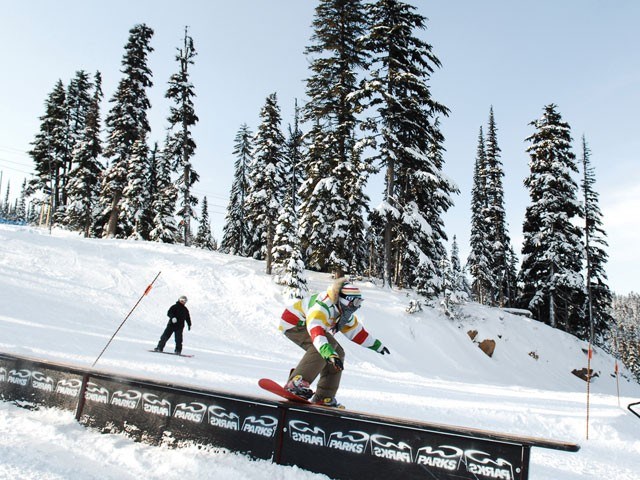The ski area boundary has a maximum limit set by Whistler-Blackcomb’s agreement with the province, but in early season, when conditions can vary from place to place, the boundary is wherever ski patrol says it’s safe to go. Beyond that, you’re on your own.
Whistler Mountain opened to the public last weekend, and Blackcomb opens today, Thursday, Nov. 22. Skiers and snowboarders are already getting into trouble beyond the boundary line, and inside the boundary, by skiing into trees and other areas where the snowpack is low and the risks are high.
“We have a ski area boundary right now that we hope people will respect because beyond that boundary there are a lot of unmarked rocks and obstacles that we haven’t gone in to mark yet,” said Bernie Protsch, ski patrol manager for Whistler Mountain.
“There’s also a lot of terrain not filled in properly, and we did experience some avalanche activity earlier, including 1.6 metre fracture lines in Glacier Bowl.”
There were a few serious injuries over the weekend, including an out-of-bounds call regarding a snowboarder with chest and back injuries who required a helicopter evacuation.
“It was quite busy for us, although we definitely handled it well,” said Protsch. “We’ve got a pretty good team up there with a lot of experience, and it was a pretty smooth opening. We tried to give the guests as much terrain as we could safely give them at the time, and will seek to continue expanding the terrain with snowmaking and heading into the alpine as well.”
While skiers and snowboarders can have their passes taken for skiing into an area marked as closed, ski patrol can’t stop people from going beyond the ski boundary area or into the backcountry. However, Protsch urges extreme caution for anyone stepping beyond the boundary.
“You do have to have the required equipment — cell phone, spare battery, transceiver, probe, shovel, and you should know how to use them,” he said. “Let people know where you’re going, don’t go alone, and be conservative in the routes you’re planning. You should also think about the daylight that’s available at this time of year, and come by the patrol hut to get information on the current avalanche hazard that is out there.”
Within the boundary skiers and snowboarders also have to be aware of obstacles, such as rocks and creeks that aren’t fully covered. He also advises people to stay out of the trees.
“The cover in the trees is still quite thin,” he said. “There are downed trees, holes, drop-offs. One feature to be on the lookout for is tree wells, which are extremely dangerous. Things get safer in there as the snowpack gets deeper, so be patient — it’s a long season and you don’t want to cut it short.”




